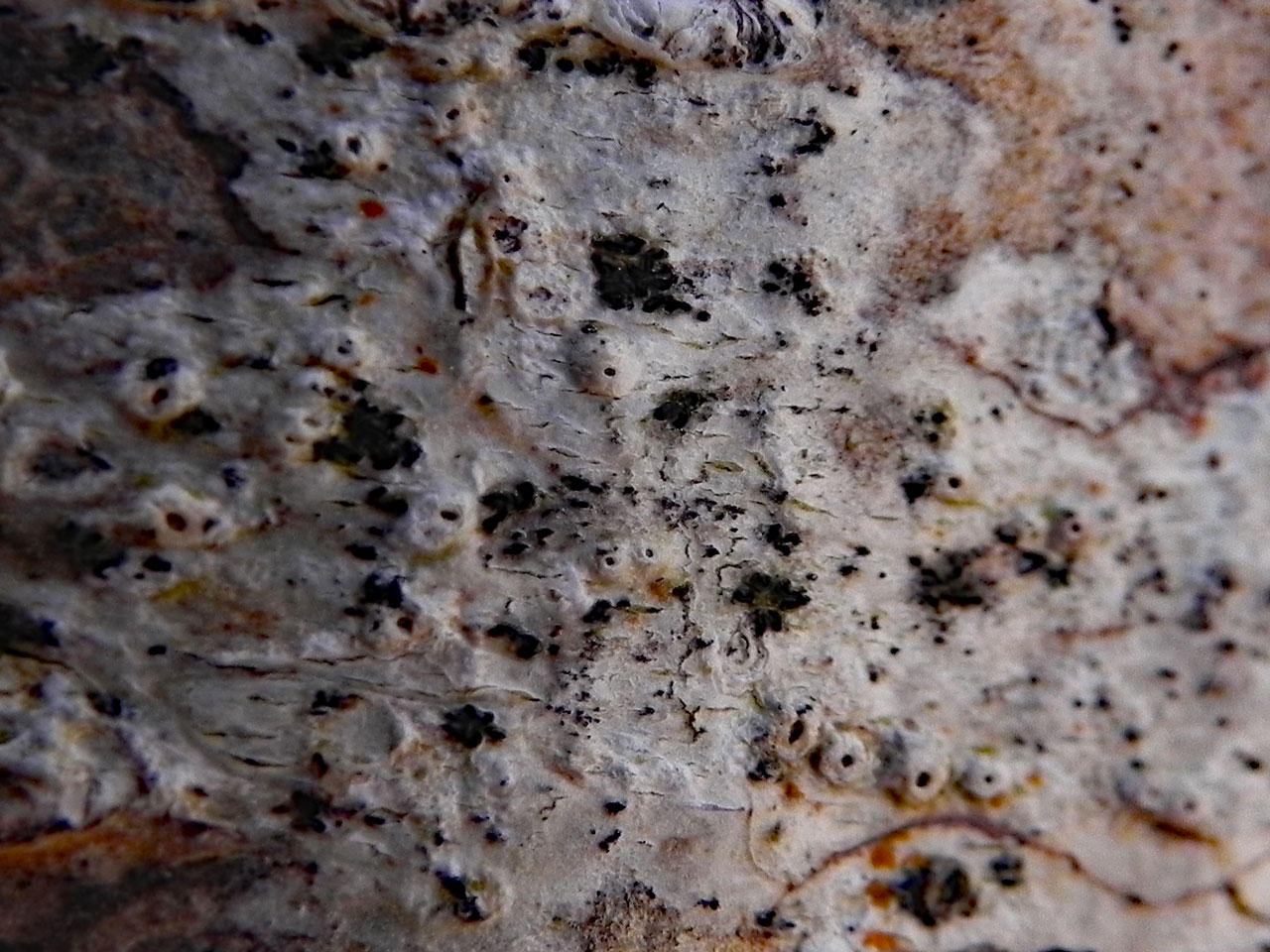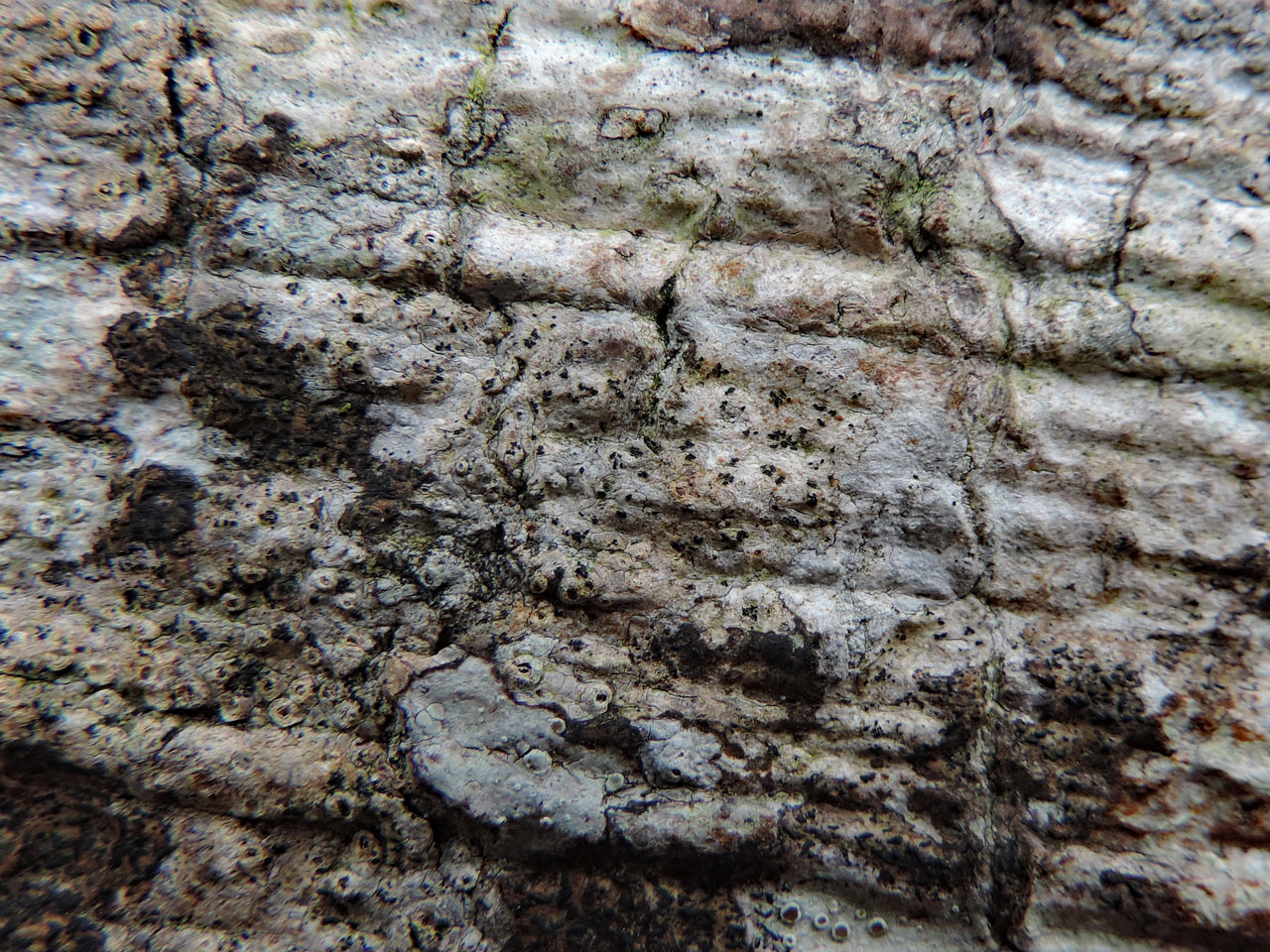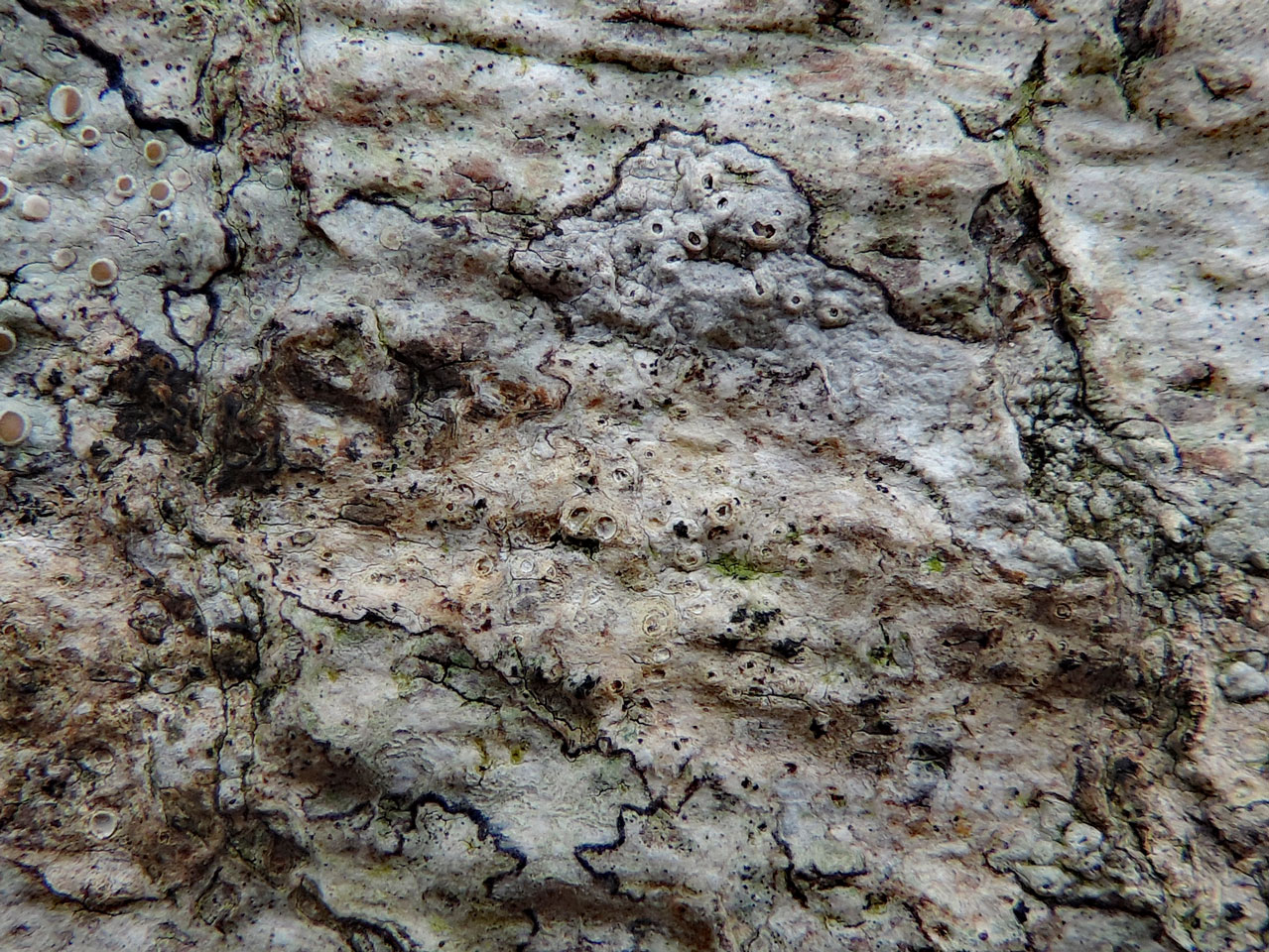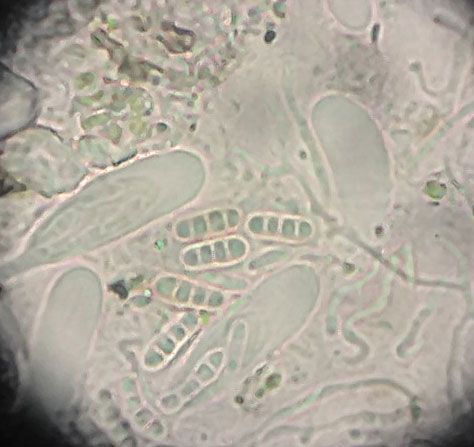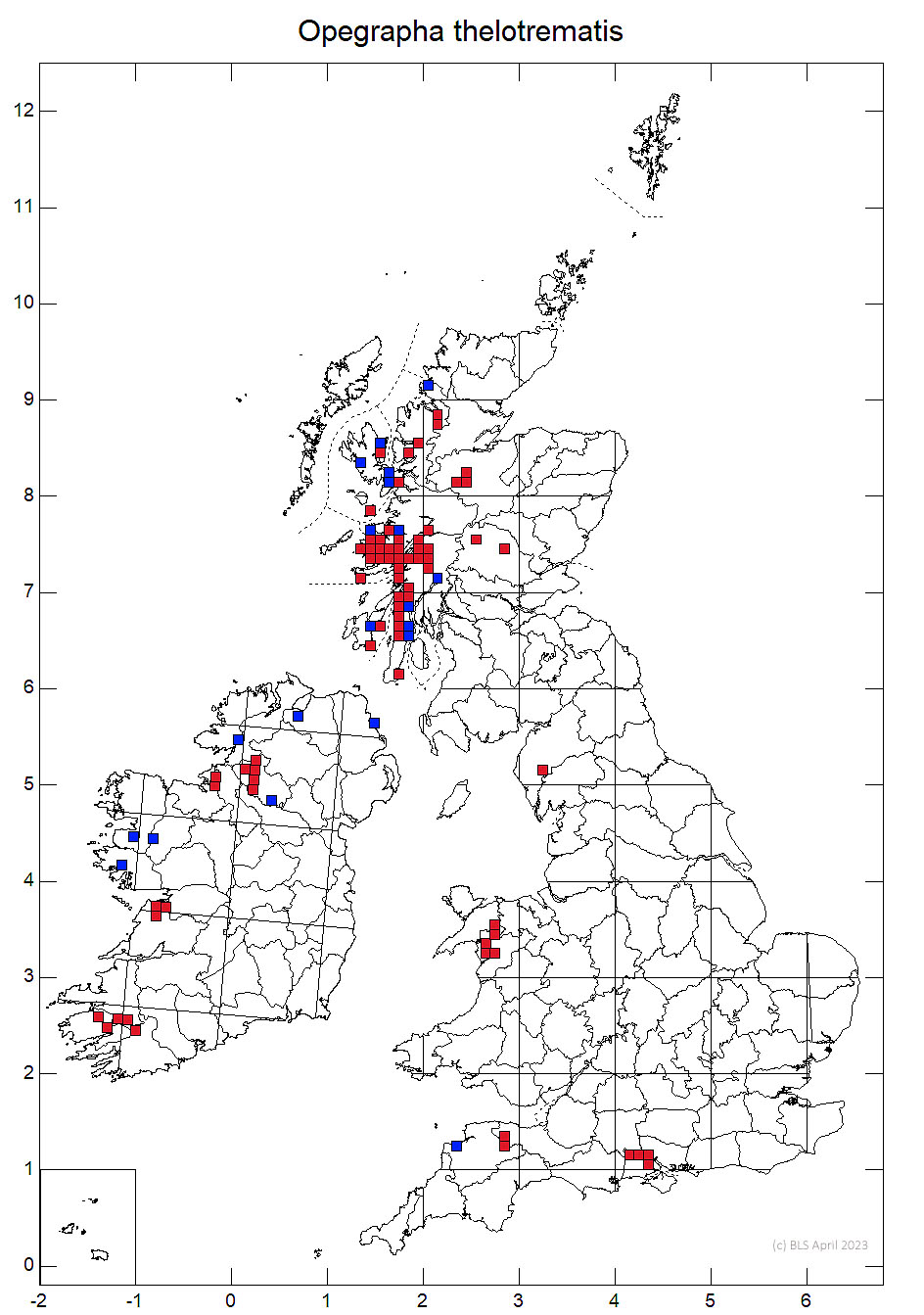Opegrapha thelotrematis
A Notable lichenicolous fungi of oceanic woodland which is an obligate parasite of Thelotrema lepadinum and T. macrosporum. Care is needed to separate it from the common Opegrapha vulgata, which commonly grows through healthy Thelotrema thalli. Opegrapha thelotrematis can be spotted by often causing fawn-coloured necrotic patches of damage to the host and also by the often clustered apothecia. The similar Opegrapha brevis is an obligate parasite of Crutarndina petractoides (Thelotrema petractoides) and has only four spores in the asci.
Thallus absent (lichenicolous). Ascomata scattered or frequently in dense clusters to 1 mm diam., black, not pruinose, lirellate, unbranched or occasionally shortly 1- to 3- furcate, with a persistently slit-like disc, 0.14–0.6 (–0.8) × 0.1–0.14 mm wide, 0.1–0.12 mm high; exciple well-developed laterally, 20–36 μm thick, brown-black, K+ greenish, at the base often irregular; epithecium absent, the exciple remaining incurved over the top of the hymenium except for the narrow slit; hymenium 45–60 μm tall, colourless, I+ blue gradually turning reddish; paraphysoids richly branched, l–2 μm diam., most with their apices remaining attached to the overlying exciple; asci clavate, 35–50 × 12–13 μm, with a minute, dark amyloid apical ring, 6- to 8-spored at maturity; ascospores 3-septate, the upper two cells slightly wider, ends obtuse, colourless or becoming brown due to deposition of minute pigment granules from the sheath, 13.5–17 × (4–) 4.5–5.5 (–6) μm. Pycnidia inconspicuous, ± immersed, 50–70 μm diam.; conidia short-cylindrical or slightly broader towards the proximal end, straight, 3·5–4·8 × ca 0·8 μm.
Often producing fawn-coloured necrotic patches on the host. The damage to the host and the often clustered apothecia helps to pick out this lichenicolous fungus from Opegrapha vulgata, which commonly grows through healthy Thelotrema thalli. The three septate spores obtuse ended spores help separate this species if there is doubt.
Compared with Opegrapha arthoniicola by Coppins et al. (2021) and perhaps closely related, but the host lichen is quite different and O. thelotrematis has somewhat longer and broader ascospore.
On Thelotrema lepadinum and T. macrosporum, in oceanic woodland, mainly on Hazel, but also on Birch and Beech.

Widespread in W. Scotland, rare in Cumbria, S.W. England, W. Ireland, Wales (Merionethshire).
Widespread in the temperate rainforests of western Scotland, but rather rare beyond in other oceanic woodlands. Likely to be dependant on the maintenance of large populations of its hosts and sensitive to anything that reduces the vigour of the host populations. Increasing shade from reductions in grazing pressure is the most likely current threat.
Britain: Notable & International Responsibility Species
Scotland: Priority Taxon for Biodiversity in Scotland
Cannon, P., Coppins, B., Ertz, D., Fletcher, A., Pentecost, A. & Simkin, J. (2021). Arthoniales: Opegraphaceae, including the genera Llimonaea, Opegrapha, Paralecanographa and Sparria. Revisions of British and Irish Lichens 13: 1-19. Link
Text by Neil A Sanderson based on Cannon et al (2021)
